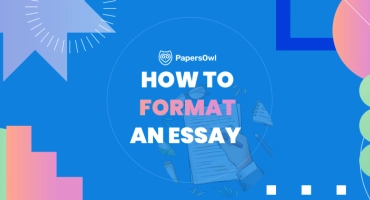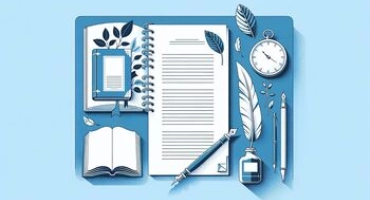How to Quote a Poem in an Essay (MLA Style)?
Table of contents
- 1 Why Quoting Poetry Matters?
- 2 Know Your Citation Style Before You Begin
- 3 How to Quote a Poem in an Essay Using MLA Format?
- 4 How to Cite a Poem in MLA (In-Text Citations)?
- 5 How to Reference a Poem in the Works Cited Page?
- 6 Common Mistakes to Avoid When Quoting Poetry
- 7 Quoting Poems in Other Formats (APA, Harvard, Chicago)
- 8 Final Thoughts
Poetry can help bring emotion and meaning to your essay. A few short lines can say a lot. Poems may express profound aspects of personality, emotions, or big ideas. But you need to follow the right rules. If the complex formatting and quoting requirements become too much, a professional service can write my essay for me ensuring perfect citations and structure.
In this guide, you’ll learn how to quote a poem in an essay using MLA formatting quotations. We’ll show you how to use quotation marks, line numbers, and block quotes. You’ll also learn how to format the cited page and avoid common mistakes.
Do you use three lines or more? This step-by-step guide will help you quote poetry with confidence.
Why Quoting Poetry Matters?
Quoting poems in your essay adds value to your writing. Poems often say big things in just a few lines. A few words or lines can express deep thoughts. For example, dreams may express profound aspects of personality. When you quote poetry, you give your writing more depth and power.
Using the right quotes shows you understand the poem. It also shows you can connect it to your topic.
Maybe you’re writing about how Papa’s Waltz by Theodore Roethke explores his childhood. Or maybe you’re using lines from Urban Legends by Jan Harold Brunvand to discuss modern myths. In both cases, quoting poetry the right way makes your essay stronger.
Know Your Citation Style Before You Begin
Before adding poetry to your paper, ask yourself: What citation style should I use? The answer depends on your class. Most English and literature classes use MLA, the most popular literary writing style. If you’re writing about science or social topics, your teacher might ask for APA, Harvard, or Chicago instead.
Each style has its own set of rules. You will format quotations differently depending on the one you use. For example:
- MLA uses the author’s name and line numbers in the in-text citation.
- APA focuses more on the date of the work and uses page numbers.
- Harvard is like APA but has small changes in punctuation and order.
It’s important to follow just one format. Mixing styles can confuse readers and lower the quality of your work. Learning how to quote in an essay using the right format shows that you understand academic writing.
This template guide mostly uses MLA formatting for quotations, especially poetry. But we’ll also give quick tips for APA, Harvard, and Chicago styles.
How to Quote a Poem in an Essay Using MLA Format?
In MLA, how you quote a poem depends on the number of lines. MLA uses two formats: one for short quotes (three lines of verse or fewer) and one for long quotes (more than three lines).
Quoting 1–3 Lines of Poetry
When you quote one to three lines of poetry, keep it inside your paragraph. This is called a short quote.
Use double quotation marks around the quote. You should show line breaks with a slash ( / ) and stanza breaks with a double slash ( // ).
In Papa’s Waltz, Theodore Roethke writes, “The whiskey on your breath / Could make a small boy dizzy / But I hung on like death” (1–3).
“The whiskey on your breath / Could make a small boy dizzy / But I hung on like death” (Roethke 1–3).
You can also quote part of a line. Just keep the poet’s word order and meaning.
Roethke explores a child’s fear when he says, “I hung on like death” (3).
Always include an in-text citation with the line numbers. If you already named the poet in your sentence, you don’t need their name in the citation.
If you’ve already said the author’s name in your sentence, you don’t need to repeat it in the citation. But if you haven’t, make sure to include it in the parentheses. This is one of the basic rules you should understand when you learn how to cite a poem in MLA.
Quoting 4 or More Lines: Block Quotes
If you quote more than three lines of poetry, you need to use a block quotation format. This means the quote stands alone in your paper, instead of being part of your paragraph.
Start the quote on a new line. Then indent the whole quote one inch from the left margin. Do not use quotation marks. Keep the original line breaks just as they appear in the poem. If there’s a stanza break, keep that too. This shows respect for the poet’s structure. Also, make sure you maintain double spacing throughout the block quote.
Roethke poem shows a child’s mix of fear and love:
The whiskey on your breath
Could make a small boy dizzy;
But I hung on like death:
Such waltzing was not easy. (1–4)
Notice that the punctuation goes inside the poem, not after the citation. The line numbers go at the end, after the final punctuation mark.
If you already mention the poet’s name in your sentence, you don’t need to include it in the in-text citation. If not, include the poet’s last name with the line numbers, like this:
(Roethke 1–4)
Using the block quotation format makes longer quotes easier to read. It also shows you understand the basic guidelines for incorporating quotations in MLA formatting. Learning how to cite poems correctly helps your writing stay clear and professional.
Quoting with Ellipses and Omissions
You don’t always need the full quote. If you only want a part, you can skip words or lines. This helps speed up the poetic text and keeps your writing focused.
Use ellipses and three dots to skip a word or words (…). This shows something was left out.
Roethke writes, “The whiskey on your breath … was not easy” (1, 4).
To skip a line or stanza, use a double slash ( // ).
“I hung on like death // Still clinging to your shirt” (3, 6).
Always keep the original line breaks that you use. Don’t change the poet’s word order or meaning. Use quotation marks and include an in-text citation with the correct line numbers. Make sure you do not change the poem’s meaning. If you delete words from poetry, be honest about it.
How to Cite a Poem in MLA (In-Text Citations)?
Basic Rules for In-Text Citations
When you wish to understand how to apply MLA formatting quotations in your writing, it’s important to know how to use in-text citations correctly.
When you’re learning how to cite a poem in MLA style, you should use line numbers, not page numbers, when you quote lines of poetry. The line numbers go in parentheses right after the quote. This helps readers find the exact place in the poem.
If you don’t mention the author’s name in your sentence, include it in the parentheses.
“Could make a small boy dizzy” (Roethke 2).
If you do mention the author’s name in the sentence, just include the line number in parentheses.
Roethke writes, “Such waltzing was not easy” (4).
If you quote more than one line, include both line numbers and use a dash to show the range.
“I hung on like death: / Such waltzing was not easy” (Roethke 3–4).
If there are no line numbers (like in some online versions or short poems), use the page number instead, if available. If there’s no page or line number, just use the author’s name.
“Dreams may express profound aspects of personality” (Foulkes).
Use quotation marks for short quotes. Keep the bracket format simple: open the parenthesis, the author’s last name, and line numbers, then close the parenthesis.
Following these basic guidelines for incorporating quotations helps keep your writing clean and correct. Quoting right makes your essay stronger and helps avoid plagiarism.
Multiple Poems by the Same Author
If you quote multiple poems by the same author in your essay, you must show which poem you’re using. That way, the reader knows where the quote comes from.
To do this, include the poem title and the line number in your in-text citation.
“Hung on like death” (“Papa’s Waltz” 3).
If the poem title is short, put it in quotation marks. Use italics instead if it’s a long or book-length poem.
“He wept for every soul…” (The Prelude 45).
You can also shorten the poem title if it’s long. Just make sure it’s still clear which poem you’re quoting.
“I wandered lonely as a cloud…” (“Daffodils” 1).
This rule is part of the MLA formatting quotations system. It helps keep your text clear when you’re using quotes from more than one poem by the same writer. Always match your quote with the right line numbers and poem title in your citations.
How to Reference a Poem in the Works Cited Page?
Your Works Cited page should list full details of every poem you quote. MLA uses different formats based on the source.
| 📖 Source Type | MLA Format & Example |
|---|---|
| Poem in a Book |
Format:
Last Name, First Name. Title of Poem. Title of Book, edited by Editor Name, Publisher, Year, page number(s). Example:
Roethke, Theodore. Papa’s Waltz. The Collected Poems of Theodore Roethke, edited by Edward Hirsch, Random House, 2001, pp. 50–51. |
| Poem in an Anthology |
Format:
Last Name, First Name. “Poem Title.” Anthology Title, edited by Editor Name, Publisher, Year, page number(s). Example:
Brunvand, Jan Harold. “Urban Legends.” Poems That Shaped America, edited by Linda Baxter, Oxford UP, 2002, pp. 100–101. |
| Poem from a Website |
Format:
Last Name, First Name. “Poem Title.” Website Name, URL. Accessed Day Month Year. Example:
Roethke, Theodore. “My Papa’s Waltz.” Poetry Foundation, www.poetryfoundation.org/poems/43330/my-papas-waltz. Accessed 18 Apr. 2025. |
Make sure your cited page matches the in-text citations. Every quote must have a matching full entry.
Common Mistakes to Avoid When Quoting Poetry
Quoting poems can strengthen your essay, but only if you do it right. Many students forget small rules about MLA formatting quotations, like using line numbers or proper quotation marks. Let’s look at common mistakes to avoid when learning how to quote a poem.
- Avoid using page numbers when MLA asks for line numbers.
- Don’t forget quotation marks for short quotes.
- Refrain from changing the poem’s punctuation or line breaks.
- Don’t forget to cite your source, even if you use your own words.
- Avoid skipping the Works Cited page.
- Don’t forget to maintain double spacing throughout.
- Don’t miss the basic guidelines for incorporating quotes.
- Don’t forget to use a block quotation format for four or more lines.
Quoting Poems in Other Formats (APA, Harvard, Chicago)
| Style | Key Differences | In-Text Citation Example | Reference Example (for Works Cited / Bibliography) |
|---|---|---|---|
| APA | Use author, year, page. No line numbers. | (Roethke, 1942, p. 15) | Roethke, T. (1942). The Lost Son and Other Poems. NY: Doubleday. |
| Harvard | Use author, year, page in parentheses. | (Roethke 1942, p. 15) | Roethke, T. 1942, The Lost Son and Other Poems, Doubleday, New York. |
| Chicago | Use footnotes or endnotes. Add full source later. | ¹Theodore Roethke, The Lost Son and Other Poems (New York: Doubleday, 1942), 15. | Roethke, Theodore. The Lost Son and Other Poems. New York: Doubleday, 1942. |
Tips:
- APA and Harvard use page numbers, not line numbers.
- Chicago uses footnotes, often in academic writing or history papers.
- MLA is the best for literature, and line numbers are used instead.
Final Thoughts
Quoting poetry in an essay isn’t just about filling space. It’s about showing that you understand the meaning behind the words. Poems may express profound aspects of personality, emotions, and big ideas. But quotation – how you use those lines in your own writing – is even more important.
Why? The way you quote poetry shows how well you can think, write, and follow rules. When you format quotations correctly, it tells your teacher that you care about details. A well-designed essay with neat in-text citations, proper quotation marks, and a clean cited page is easier to read and often gets a better grade.
Here’s a quick tip: re-read the quoted part aloud before you quote any poem. Poetry may sound different from what it looks like. This helps you feel the rhythm and catch any mistakes.
So when you’re learning how to reference a poem in an essay, remember: it’s not just about rules. It’s about using another writer’s words in a way that adds meaning to your own. Do it well, and your essay will stand out.







